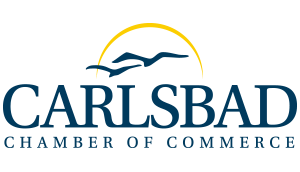The structure of our local economy has an opportunity for a tune-up while meeting the challenges of growth.
If done well, mixed-use development is a model that can stimulate our local economy. To achieve this, business leaders will make seemingly unlikely alliances to produce economically and culturally vibrant communities.
Increased density is inevitable. The state has set targets for the residential sector per five-year terms.
For 2005-2010, San Diego County has been tasked with producing 110,000 new residences. The 2010-2015 targets will likely be more aggressive.
Concurrently, Senate Bill 375 has raised the bar for land development models. The purpose of this bill is to reduce greenhouse gas emissions by reducing the use of automobiles.
In order to do this, it is proposed that higher-density, mixed-use communities be developed along public-transit corridors. The state's ideal vision is that a majority of citizens would commute by foot, bike or public transportation.
At its highest potential, mixed-use development offers the opportunity to live close enough to work and shopping that one doesn't need to own a vehicle. With a wide variety of price points on these homes, a diverse work force can share in this benefit.
There are already some mixed-use communities in North County, but many of these suffer from a lack of diversity. The live-work loft model is one of these.
Merging an environmentally sustainable land development pattern with sustainable economic growth requires alliances of seemingly unlikely business partners. It is conceivable that a light manufacturer will partner with a residential developer to plan a soft-urban community.
Similarly, a retail developer may partner with a residential developer for similar ends. But increased consumption will not create a lasting economic future for North County.
Production, rather than consumption, will guide us out of the current recession, building a foundation for a long lasting local economy. Partnerships of industry and residential builders will not only create a new model for living, but for economic growth.
A perpetually self-reliant economy produces a variety of goods and services while staying in balance with local consumption. An effective land development pattern will allow this balanced, free market to efficiently grow while meeting the challenge of reducing greenhouse gas emissions.
While some mixed-use projects may be a challenge for the local planning department's land use policies, it is important to push ahead into new models of development. Well designed developments will mesh these seemingly disparate land uses into cohesive communities.
The ideal for reducing our reliance on the auto will not only be met, but our micro-economy will continue to be vibrant and wealthy.
For more information, call (760) 436-0327 or visit www.domearch.com.
If done well, mixed-use development is a model that can stimulate our local economy. To achieve this, business leaders will make seemingly unlikely alliances to produce economically and culturally vibrant communities.
Increased density is inevitable. The state has set targets for the residential sector per five-year terms.
For 2005-2010, San Diego County has been tasked with producing 110,000 new residences. The 2010-2015 targets will likely be more aggressive.
Concurrently, Senate Bill 375 has raised the bar for land development models. The purpose of this bill is to reduce greenhouse gas emissions by reducing the use of automobiles.
In order to do this, it is proposed that higher-density, mixed-use communities be developed along public-transit corridors. The state's ideal vision is that a majority of citizens would commute by foot, bike or public transportation.
At its highest potential, mixed-use development offers the opportunity to live close enough to work and shopping that one doesn't need to own a vehicle. With a wide variety of price points on these homes, a diverse work force can share in this benefit.
There are already some mixed-use communities in North County, but many of these suffer from a lack of diversity. The live-work loft model is one of these.
Merging an environmentally sustainable land development pattern with sustainable economic growth requires alliances of seemingly unlikely business partners. It is conceivable that a light manufacturer will partner with a residential developer to plan a soft-urban community.
Similarly, a retail developer may partner with a residential developer for similar ends. But increased consumption will not create a lasting economic future for North County.
Production, rather than consumption, will guide us out of the current recession, building a foundation for a long lasting local economy. Partnerships of industry and residential builders will not only create a new model for living, but for economic growth.
A perpetually self-reliant economy produces a variety of goods and services while staying in balance with local consumption. An effective land development pattern will allow this balanced, free market to efficiently grow while meeting the challenge of reducing greenhouse gas emissions.
While some mixed-use projects may be a challenge for the local planning department's land use policies, it is important to push ahead into new models of development. Well designed developments will mesh these seemingly disparate land uses into cohesive communities.
The ideal for reducing our reliance on the auto will not only be met, but our micro-economy will continue to be vibrant and wealthy.
For more information, call (760) 436-0327 or visit www.domearch.com.
